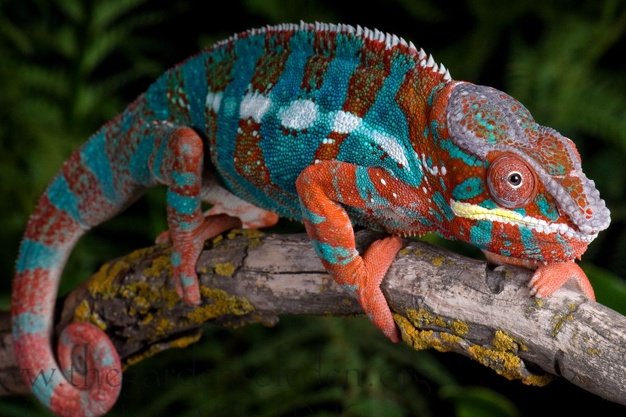Animals who can change the water flow

Life’s basic needs are food, water and living space. Any change in these factors will affect the survival of living things. An entire ecosystem can be reshaped.
Liquid water is the primary cause of life on Earth. Rivers, lakes, and the ocean are forms of naturally formed waterways. Earth is covered with 71% of water bodies.
What is Ecosystem Engineer?
One of the interesting topics in biology is the role of ecosystem engineers. An ecosystem engineer is any living being that creates, modifies, supports or destroys an environment.
Scientists define this as “organisms that directly or indirectly change the availability of resources to other species by making physical state changes to biotic or abiotic materials.”
In simple words, ecosystem engineers change their physical surroundings in such ways that it affects the livelihood of other organisms.
These ecosystem engineers are” Animals” who can change the flow of water like beavers, or change land ways like Elephants. Can animals change ‘Earth’s surface? Can animals shift the flow of the water stream as well? Can Earth’s surface be changed if waterways are changed? How they do it? Let’s find out!
Animals which can cause the change in the flow of water are:
- American Alligator
- Beavers
- Hippopotamus
- Elephants
- Burrowing Crabs
What is the American Alligator?
An American Alligator is a reptile belongs to crocodilian family. It is the biggest reptile in North America. It lives in freshwater wetlands in the southeastern United States. Besides swimming, alligator walks runs and crawls on land. It has a “high walk” and a “low walk.” The low walk is sprawling, while in the high walk, the alligator lifts its stomach off the ground.
How Alligators change the waterways?
Alligators play an essential role in their wetland ecosystems by creating small ponds known as alligator holes. Alligator holes retain water during the dry season and provide habitats for other animals. They form these small ponds by digging from their snouts and claws. For another living being, these holes provide badly-needed oases.
- Frogs and turtles flow into these comfortable little ponds,
- while plants surround their sides, bringing all kinds of insects.
What is Beaver?
Beaver is a large mammal of the rodents family, which are categorised by a single pair of continuously growing tooth in each of the upper and lower jaws. All beavers need water to survive. They live in or around freshwater ponds, lakes, rivers, marshes and swamps.
How Alligators change the waterways?
Beavers have a tremendous impact on ecosystems. A beaver’s home is called a lodge. Lodges are little dome-shaped houses made from woven sticks, grasses and moss plastered with mud. These can be up to 8 feet to 3 feet high inside, Lodges are built on the banks of ponds, on islands or lakeshores, just barely above water level. Many lodges have an underwater backdoor for instant swimming access.
- These new beaver-created wetlands provide homes for smaller animals like amphibians.
- The rodents’ dams make high natural filters, blocking excess nitrogen from our creeks and streams.
Their tails aren’t just used for swimming. Beavers also slap the water with them to startle predators as they dive out of harm’s way.
What are Hippopotamuses?
Hippopotamuses are large, round, water-loving animals that are native to Africa. The word “hippopotamus” came from the Greek word for “water horse” or “river horse,” Hippos are aggressive and are considered very dangerous. They have large teeth and tusks that they use for fighting off threats, including humans.
How hippopotamus change the waterways?
The massive creatures like to plough through the grass beds that surround water bodies. This creates deep pressure on the underlying soil, which in turn become channels.
Worn down into deep, plant-free gaps by wandering hippos, these footpaths can be as much as 16 feet (5 meters) wide and — just like alligator holes. They are quick to fill up with water. What’s more, hippo highways linking the pools to big rivers can also be established. If the area should flood, these connection points may become an outlet for rising water. They also enable swamplands to expand.
What are Burrowing Crabs?
Crabs come from the same family as lobsters, crayfish, shrimp. Crabs have five pairs of legs, with the front legs being the larger pincers. They can live in both shallow and deep-sea water.
How Burrowing Crabs change the waterways?
Burrowing Crabs are an efficient, deep-digging burrower. Like beaver’s holes, the tunnels these small crabs builds are liable to weaken the surrounding land. Because burrowing crabs have such a pronounced effect on sediment composition, their tunnels can also cause completely new streams to form within the mangrove systems.
So despite being minuscule animals, burrowing crabs can shake up entire waterway networks.
What are Elephants?
Elephants, the largest existing land animals, are mammals of the family. With their characteristic long noses, or trunks; large, floppy ears; and wide, thick legs, there is no other animal with a similar physique.
How Alligators change the waterways?
Elephants, the co-authors noted, are great at building water channels. The tusked herbivores like to cover the same land routes over and over again, making trails in the process. Sometimes, multiple generations of elephants will reuse the same footpaths. As time goes by, the massive animals can’t help but compress the soil, turning their walkways into trenches.
When elephants move back and forth between two bodies of water, their sunken trails become nice conduits. Thus, rivers or ponds that were once isolated can be merged via elephant-made canals.
Get Free “Winspire Digital Worksheets of worth Rs. 129 Value”
Please enter your details to get the monthly E – Booklet + absolutely premium content to expand your horizons.


